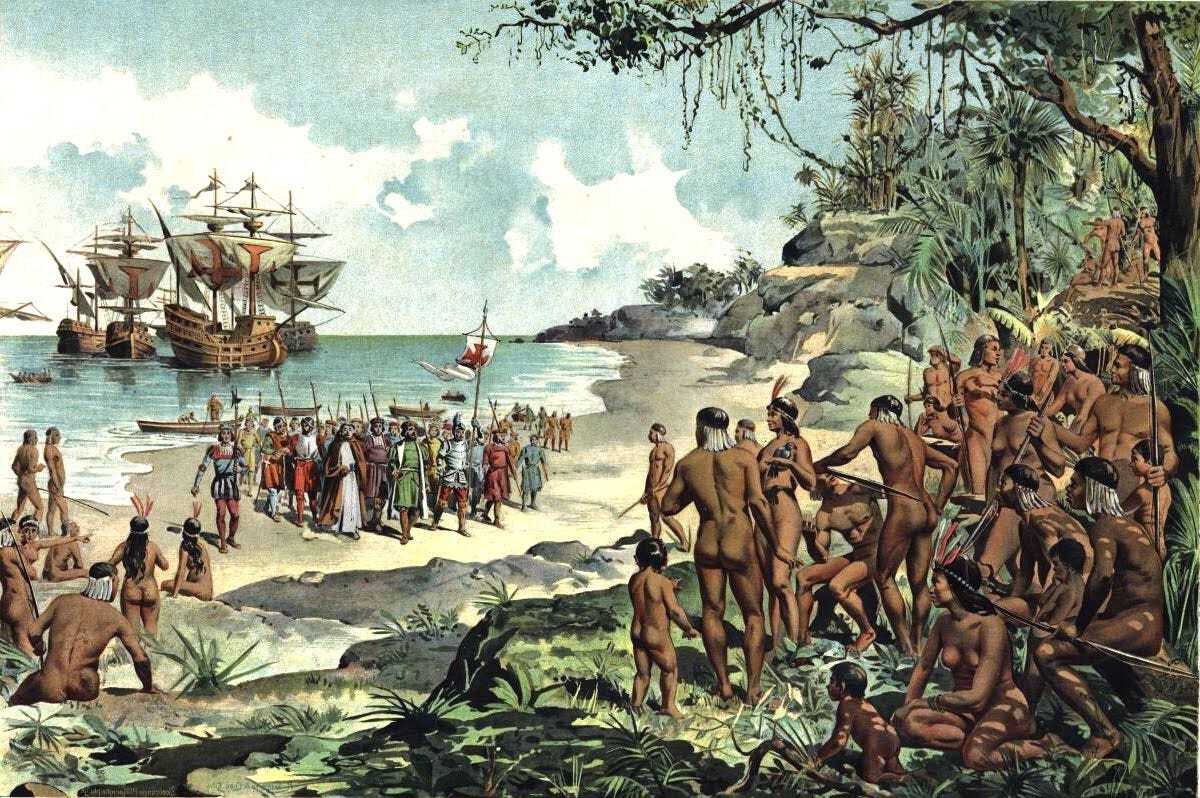
Colonial influence has shaped the world in countless ways, leaving a lasting impact on culture, language, and society. Ever wondered how colonial powers managed to leave such a deep imprint on the regions they controlled? Colonialism wasn't just about conquering lands; it involved spreading ideas, traditions, and systems that would endure for generations. From the architectural styles in former colonies to the languages spoken today, the legacy of colonial rule is evident. This blog post dives into 40 intriguing facts about colonial influence, shedding light on how these historical events continue to affect our modern world. Get ready to uncover the fascinating ways colonialism has woven itself into the fabric of our daily lives.
Key Takeaways:
- Colonialism shaped languages, architecture, food, education, politics, and culture in former colonies. It left a lasting impact, blending local traditions with those of the colonizers, creating unique and diverse expressions.
- English, Spanish, French, Portuguese, and Dutch are among the languages influenced by colonialism, while colonial architecture, food, education, politics, and culture reflect a fusion of local and colonial traditions.
Colonial Influence on Language
Colonial powers left a significant mark on the languages spoken in their former territories. Here are some fascinating facts about how colonialism shaped languages around the world.
- English is the official language in 54 countries, largely due to British colonial rule.
- Spanish is spoken by over 460 million people, primarily in Latin America, a legacy of Spanish colonization.
- French remains an official language in 29 countries, many of which are in Africa, due to French colonial influence.
- Portuguese is the official language of Brazil, Angola, Mozambique, and several other countries, thanks to Portuguese explorers.
- Dutch is still spoken in Suriname and parts of the Caribbean, remnants of Dutch colonial rule.
- Afrikaans, a language derived from Dutch, is widely spoken in South Africa and Namibia.
- Creole languages developed in many colonies, blending European languages with local dialects.
Colonial Influence on Architecture
Colonial architecture often blends the styles of the colonizers with local traditions. This fusion has created some unique and beautiful structures.
- Spanish colonial architecture features red-tiled roofs, stucco walls, and courtyards, common in Latin America.
- British colonial buildings often include large verandas and high ceilings to combat tropical heat, seen in India and the Caribbean.
- French colonial architecture in Vietnam combines French styles with local materials and techniques.
- Portuguese colonial buildings in Brazil and Goa often feature azulejos, decorative ceramic tiles.
- Dutch colonial architecture in Indonesia includes gabled roofs and large windows.
- Moorish influences can be seen in Spanish colonial buildings in the Philippines.
- Plantation houses in the American South reflect British colonial styles adapted to local conditions.
Colonial Influence on Food
Colonialism introduced new foods and culinary techniques to different parts of the world, creating diverse and rich food cultures.
- Potatoes, originally from South America, were spread worldwide by Spanish colonizers.
- Tomatoes, also from the Americas, became staples in Italian and Mediterranean cuisine due to colonial trade.
- Chili peppers from the Americas were introduced to Asia by Portuguese traders, becoming essential in Indian and Thai cooking.
- Coffee cultivation spread from Ethiopia to the rest of the world through colonial trade networks.
- Tea became a major commodity in British colonies like India and Sri Lanka.
- Chocolate, derived from cacao native to the Americas, became popular in Europe thanks to Spanish colonization.
- Spices like cinnamon, cloves, and nutmeg were highly sought after by European colonizers, leading to the establishment of trade routes and colonies in Asia.
Colonial Influence on Education
Colonial powers often established educational systems in their colonies, which have had lasting impacts on those countries.
- English-medium schools were set up in British colonies, leading to widespread use of English in former colonies.
- French education systems were implemented in many African colonies, influencing their current educational structures.
- Portuguese colonial education in Brazil emphasized Catholicism and Portuguese language.
- Dutch colonial education in Indonesia focused on training local elites to assist in administration.
- Spanish colonial education in Latin America aimed to convert indigenous populations to Christianity.
- Missionary schools played a significant role in spreading Western education in many colonies.
- Colonial universities, like the University of Santo Tomas in the Philippines, are among the oldest in their regions.
Colonial Influence on Politics
Colonial rule has had a profound impact on the political systems of former colonies, many of which still feel the effects today.
- Commonwealth nations often retain parliamentary systems modeled after the British system.
- French colonies adopted the French legal and administrative systems, which continue to influence their governance.
- Portuguese colonies like Brazil and Angola have political systems influenced by Portuguese colonial rule.
- Dutch colonial administration in Indonesia laid the groundwork for modern Indonesian governance.
- Spanish colonies in Latin America adopted Spanish legal codes and administrative practices.
- Colonial borders drawn by European powers often ignored ethnic and cultural boundaries, leading to conflicts in Africa and the Middle East.
- Decolonization movements in the 20th century were influenced by the political ideologies of the colonizers.
Colonial Influence on Culture
Colonialism has left a lasting impact on the cultures of former colonies, blending local traditions with those of the colonizers.
- Carnival celebrations in the Caribbean combine African, European, and indigenous traditions.
- Fado music in Portugal has roots in the colonial era, influenced by African and Brazilian rhythms.
- Literature from former colonies often reflects the complexities of colonial and post-colonial identities.
- Art in former colonies frequently incorporates styles and techniques introduced by European colonizers.
- Festivals in former colonies often blend indigenous, African, and European elements, creating unique cultural expressions.
The Lasting Impact of Colonial Influence
Colonial influence has left a significant mark on today's world. From language and architecture to legal systems and cultural practices, the remnants of colonial rule are evident. Many countries still use the languages of their former colonizers, which shapes communication and education. Architectural styles from colonial times can be seen in buildings, blending old and new. Legal systems in many nations are based on colonial laws, affecting governance and justice. Cultural practices, including food, music, and festivals, often have roots in colonial history.
Understanding these influences helps us appreciate the complexities of modern societies. It also highlights the importance of acknowledging and learning from history. By recognizing the lasting impact of colonialism, we can better understand current global dynamics and work towards a more inclusive future.
Frequently Asked Questions
Was this page helpful?
Our commitment to delivering trustworthy and engaging content is at the heart of what we do. Each fact on our site is contributed by real users like you, bringing a wealth of diverse insights and information. To ensure the highest standards of accuracy and reliability, our dedicated editors meticulously review each submission. This process guarantees that the facts we share are not only fascinating but also credible. Trust in our commitment to quality and authenticity as you explore and learn with us.


